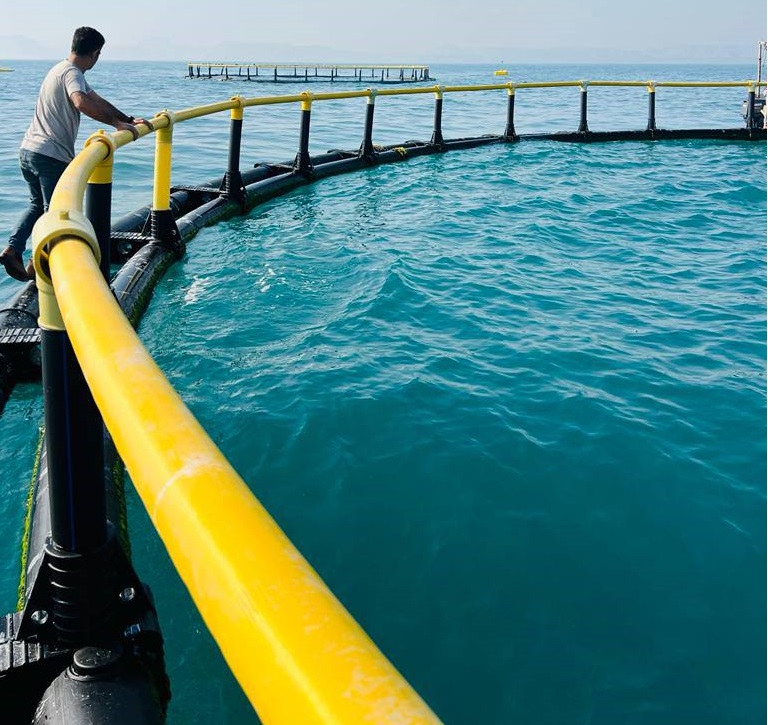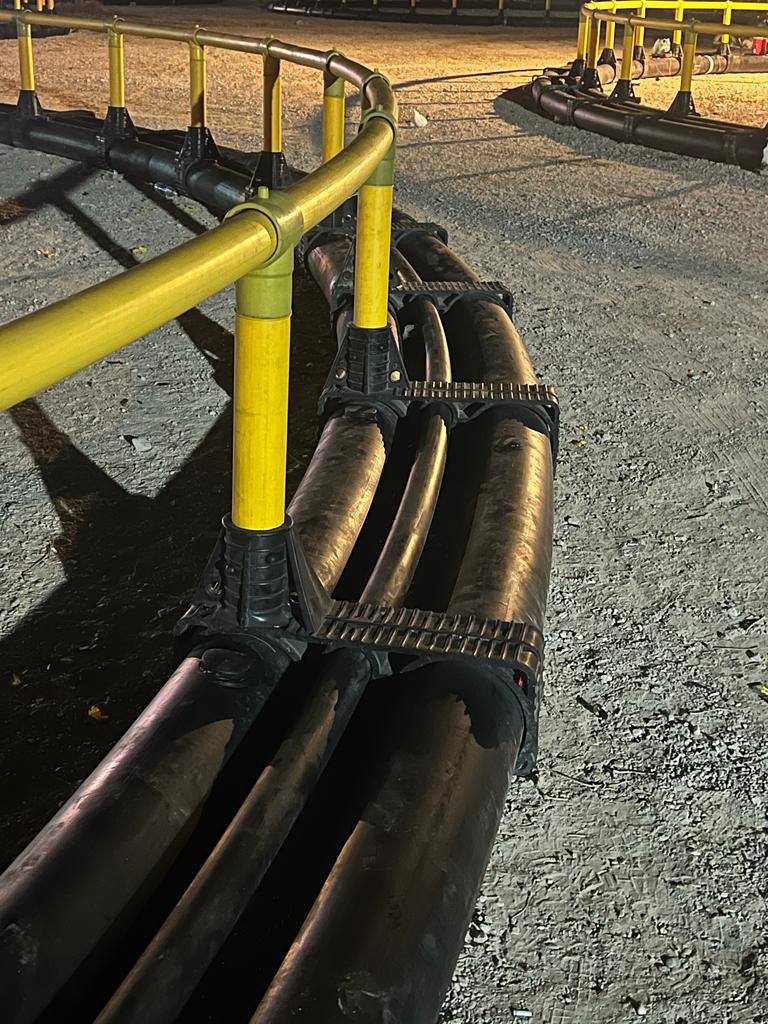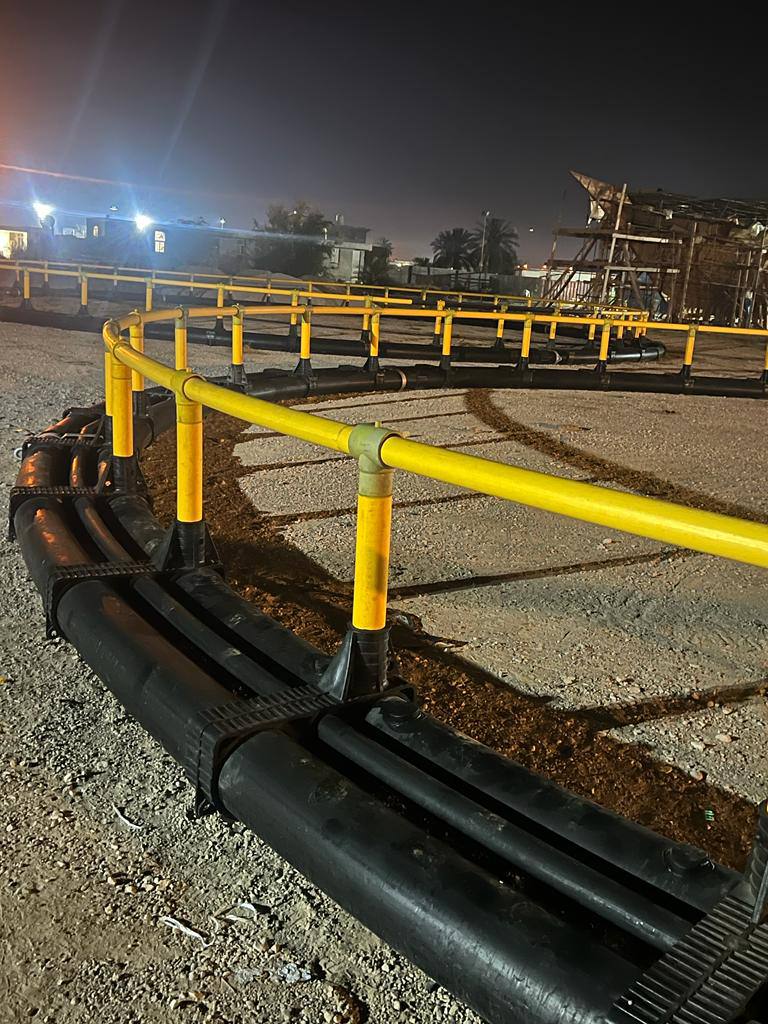
1. Features of Open Sea Aquaculture Fish Cages
• High-quality materials: These cages are typically made from high-density polyethylene (HDPE), an ideal choice due to its strong resistance to UV radiation, seawater salinity, and temperature fluctuations.
• Flexibility and high strength: These cages are designed to withstand large waves and changing weather conditions, making them suitable for offshore use.
• Long-lasting durability: Polyethylene materials are less susceptible to corrosion and decay, resulting in a long lifespan for these cages and reduced maintenance costs.
2. Components of Polyethylene Fish Farming Cages
• Main frame or structure: This part is usually constructed from polyethylene pipes, creating an organized network for holding and protecting the fish.
• Inner netting: Special, durable nets are used to prevent fish from escaping and to protect them from predators.
• Floatation system: This system keeps the cages floating on the water surface and allows them to be easily relocated if necessary.
• Connectors and fasteners: All connectors should be corrosion-resistant and able to withstand marine weather conditions to ensure the cages’ longevity.
3. Advantages of Using Polyethylene Cages in Open Sea
• Improved fish quality: In open waters, fish are raised in a more natural environment, leading to enhanced quality and flavor.
• Cost optimization: Polyethylene cages are economically viable due to lower maintenance costs and a longer lifespan.
• Environmental compatibility: Polyethylene is recyclable and has a smaller negative impact on the environment.
• Better control of farming conditions: There is greater control over water quality, feeding, and monitoring of fish health.
4. Applications and Types of Fish
These cages are used to raise various species of fish, such as salmon, bass, trout, and many others that thrive in saltwater environments. They are specifically designed for challenging conditions and deep waters, making them suitable for deployment near shores or even in open seas.
5. Safety and Maintenance Guidelines
• Regular inspections: Periodic checks of nets and connectors are essential to prevent potential damage and extend the cages’ lifespan.
• Adherence to health protocols: Given the high density of fish in cages, it’s crucial to follow health guidelines to prevent disease outbreaks and maintain fish health.
• Waste management: Pollution around the cages should be prevented to avoid negative impacts on the marine ecosystem.
6. Environmental Impact and Sustainable Management
Open sea fish farming cages can have both positive and negative impacts on the environment. Sustainable management in this area involves selecting appropriate cage locations, using environmentally friendly materials, and maintaining optimal fish density to preserve the marine ecosystem balance.
Conclusion
Open sea aquaculture fish cages are a modern technology in the aquaculture industry, enabling high-quality fish production on a large scale. Using polyethylene as the primary material ensures these cages are durable and resilient, and their recyclability makes them a sustainable choice for the future.
 |
 |
